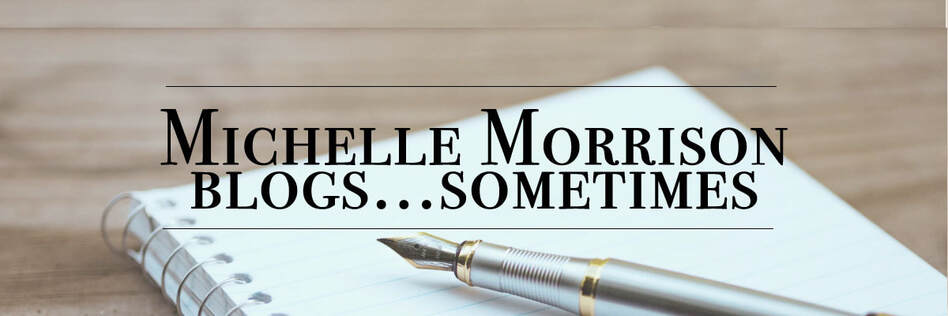|
The tension between them was palpable. Elizabeth felt her heart pounding in her breast as Lord Winters stalked closer. His broad shoulders blocked the feeble light from the fireplace and his smoldering gaze was locked on hers. He stopped mere inches from her and she could feel the heat radiating off his body. Her fingers itched to brush the lock of hair off his brow but she knew if she stayed in this room, she risked being caught and her reputation ruined.
“I’m going to kiss you, Elizabeth,” he said, the low rumble of his voice causing the fine hairs at her nape to raise in delicious anticipation. “I don’t think that’s a good idea,” she replied shakily. “Of course it’s not, but you can’t deny the attraction between us.” He was right. Since the moment they’d met, there had been a visceral pull between them, one that threatened everything she’d worked so hard to attain. Grasping onto the shreds of her common sense, she moved to leave. He grabbed her shoulders and pulled her against the rigid contours of his body. A shiver like a static shock ran through her body but she shook her head as he bent to kiss her. “No . . . You musn’t,” she insisted, but he ignored her, plundering her mouth with-- <Insert record scratch . . . > Did he just ignore her directive to stop? I’ve read historical romances for more than twenty years, and while there are some trite stories and terrible writing, there are also books that feed the soul, that allow you to experience the rush of new love and the heartbreak of young and old, that teach you about personalities and relationships far outside the bedroom. However, as a feminist whose awareness of how the normalization of anti-feminist beliefs sets us all back, I often find problematic scenes in historical romances. Do you know that picture in Disneyland’s Haunted Mansion? The one with the Victorian girl and her parasol? As the room stretches, she’s revealed to be balanced precariously on a sagging tightrope over a pit of hungry crocodiles. As a writer of historical romances, I often find myself sympathetic to that girl’s position. I wish to write a strong female character who is loved and respected by an equally strong male character but must still make them seem believable in a time period one, two, or five hundred years past. Historically, women have had very little control over their lives and bodies. And history books written by men have, either by intent or ignorance, obliterated those who strayed from the norm of a “well-behaved woman.” Writing a historical romance that embodies the flavor of a bygone era while maintaining prose that does not normalize misogynistic and anti-feminist behavior is not only achievable, but it is downright crucial. In my experience, people either enjoy romance books, or they roll their eyes and relegate it to a category of literature a step above tabloids, as if it is somehow not intellectually credible to focus on a couple’s relationship. Never mind that stories from Shakespeare to John Greene, Jane Austen to Leo Tolstoy have featured the building and development of such a relationship as a pivotal part of the story. Never mind that a book like The Horse Whisperer can become an international sensation and even go on to be made into a movie starring Robert Redford. It was written by a man and so not marketed as a romance, but as mainstream fiction. I offer this defense of my genre simply to illustrate its key importance to the evolution of our society to one of equality and mutual respect. Approximately thirty-four percent of fiction sold in the U.S. is romance—that's no small influence on our culture. A modern romance can easily feature feminist characters. Not so easy, one might think, for a story based in the Regency era, for example. But a historical romance is an incredibly effective genre to tell a relationship story for the simple reason that when you remove modern “conveniences” like cell phones, televisions, cars, and fast food, you are left with a time period that focused more on interpersonal interactions, rather than relationships that could be carried out almost exclusively online or via text. Read a Jane Austen novel and you’ll notice that the characters are forever taking walks. No TV and no internet means you had to find something to do and a walk through the countryside or garden was a socially acceptable way for men and women to spend time together. So all of a sudden, you have characters who are able to talk, to get to know one another. As a writer, it allows you to focus on the point of your story. In today’s historical romance genre, the female lead is generally a bit of an outsider. She is not the most beautiful girl (in society’s eyes), or she fancies books too much, or she (gasp) has had to work to save herself, her family, her castle. However, as more and more accounts of “unusual” women come to light in the academic world of history, I think it becomes very evident that “usual” women were not necessarily the norm. “Until the lion learns to write, every story will glorify the hunter” –African proverb I first read “Whitney, My Love” early in my romance-reading phase. At the time, I thought the crop-wielding beating and rape scenes harsh and traumatic, but I bought into the idea of a male protagonist as the “rake” who goes on to be reformed. The biggest tragedy of this book is that the female protagonist blames herself for inciting his actions. “She had driven him to it, by denying her feelings for him for so long, by her blind determination to marry Paul.” Twenty-two-year-old me allowed the male character to remain the hero of the book. Interestingly, the author re-wrote those two scenes in a later edition. However, the lead was still ultimately a misogynistic predator. Older me was not impressed. On the other side of the spectrum is the Outlander series by Diana Gabaldon. This is the story of a World War II nurse who travels back in time to eighteenth century Scotland. It was initially marketed as a historical romance and the author has since sold twenty-five million books. Her incredible success is due to the memorable main characters and their relationship which is at once intellectual, sensual, humorous, and constantly evolving. It was only when planning this article that I realized how effortlessly Gabaldon created an eighteenth-century male protagonist who was strong, powerful, charismatic, and yet completely feminist. Not once does Jamie treat Claire as anything less than his equal. There is not a single instance of “mansplaning” in over 5,000 pages of story, and yet he is utterly believable as a Highland Scot of 1743. There is a corporal punishment scene in the first book when Jamie must put Claire over his knee for actions which put their group at mortal risk. But the thrashing occurs because she is a member of the clan, not because she is his subservient wife. He tells her that if she were a man, she’d have been beaten with fists for her gross misconduct, and it is only by her accepting similar, though less brutal, punishment that the rest of the group will forgive and accept her. You could argue that he should not have laid a hand on her at all, but this scene was handled with a perfect blend of modern sensibilities meeting norms of the distant past. In editing a manuscript I first wrote a few years ago, I came across a sex scene in which the male protagonist approached the female protagonist “like a predator.” What I meant, of course, is that he was moving with the sinuous grace of a lion. But I didn’t expand on that and as a result, the “predator” disrupted what was otherwise a rather engaging bit of steaminess. I am all for a bit of consensual dominance in a love scene. There is a great deal of intellectual engagement to be enjoyed with the physical differences between men and women. But a writer must take care to illustrate that enjoyment and not allow predatory behavior and physical dominance to become the norm in writing a historical relationship. Aggression toward women is still so easy to normalize that even an avowed feminist can find herself using words or phrases that evoke a male hierarchy. When we remove it from our writing—even when writing about a time generally considered more misogynistic—it allows the reader to enjoy the story, encourages her to expect respect, and allows for the awareness that people in the past were not necessarily how history books portray them.
0 Comments
|
AuthorGreat, all I need is one more reason to procrastinate! As if Instagram wasn't enough... Archives
March 2022
Categories |
© COPYRIGHT 2015. ALL RIGHTS RESERVED.


 RSS Feed
RSS Feed
